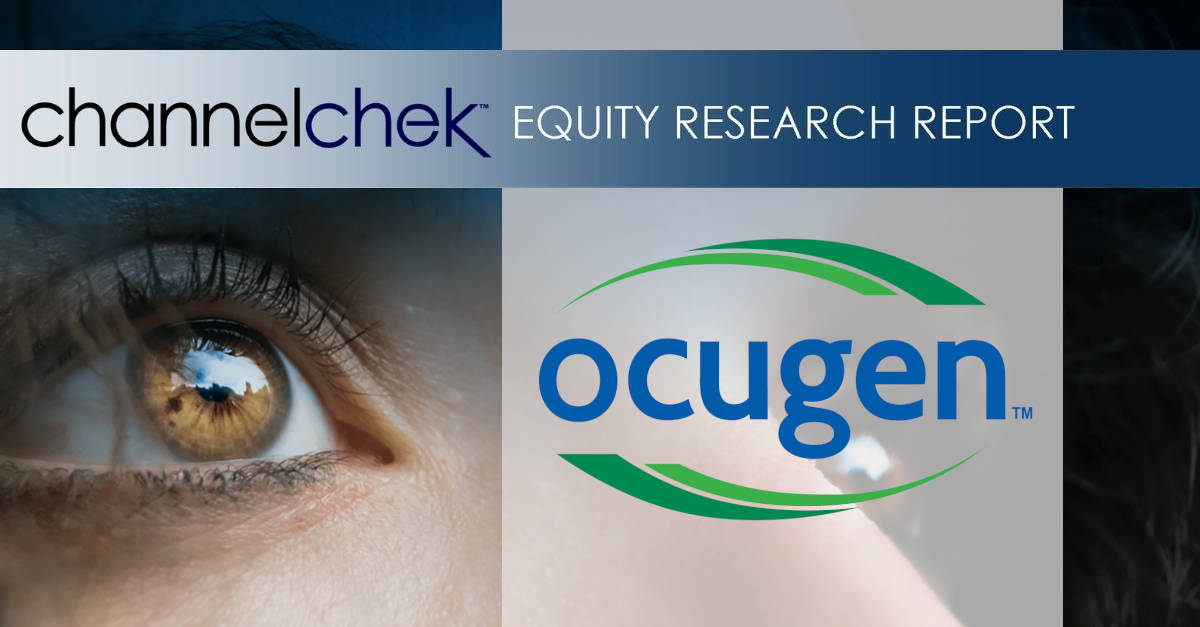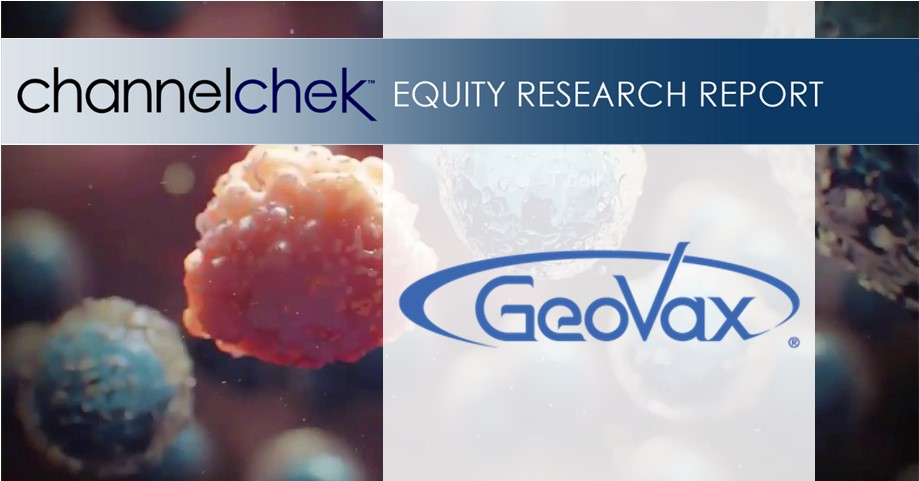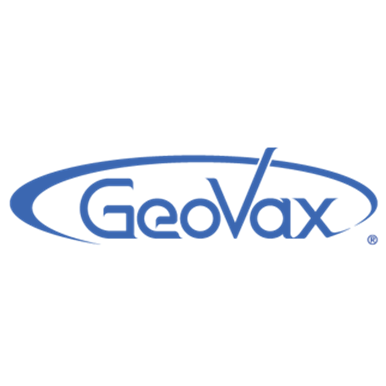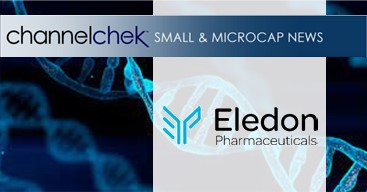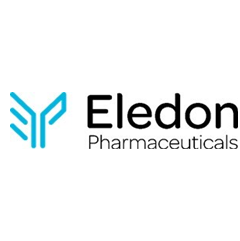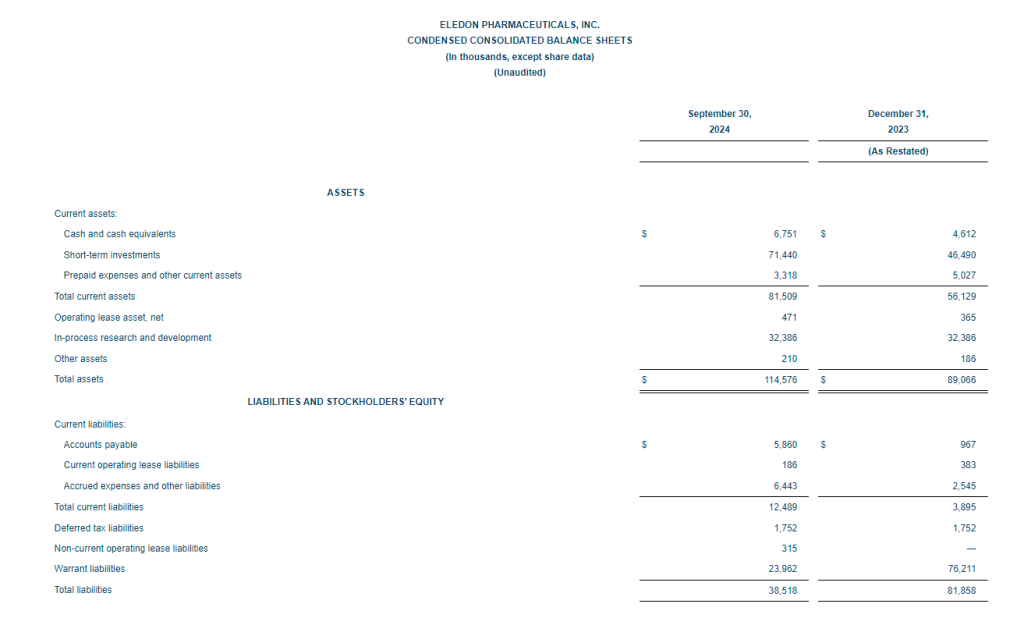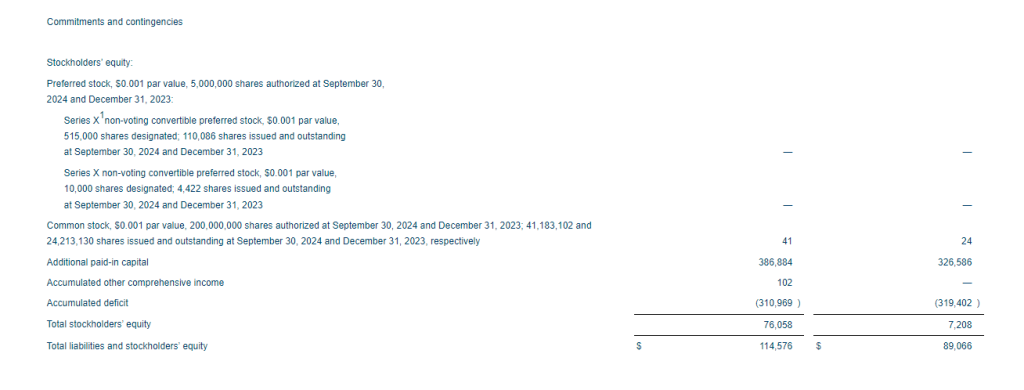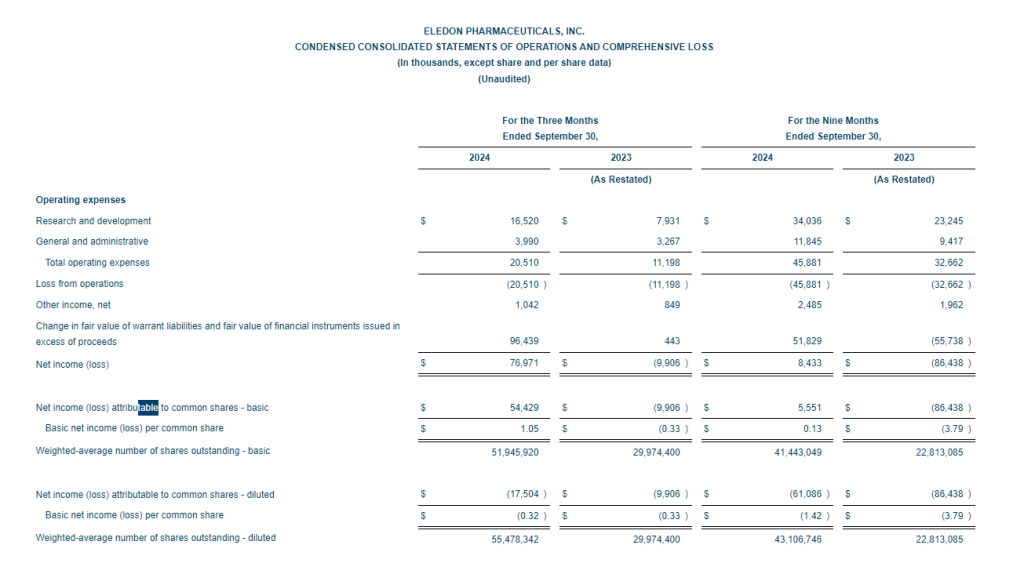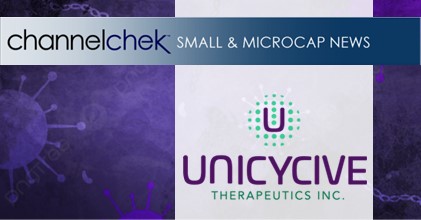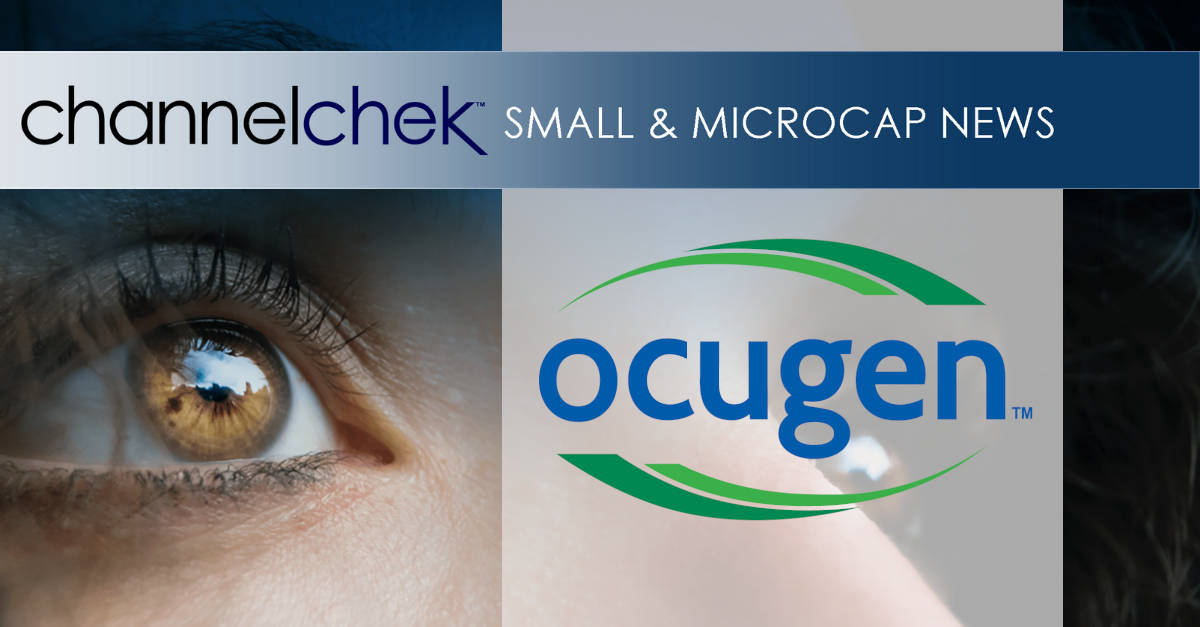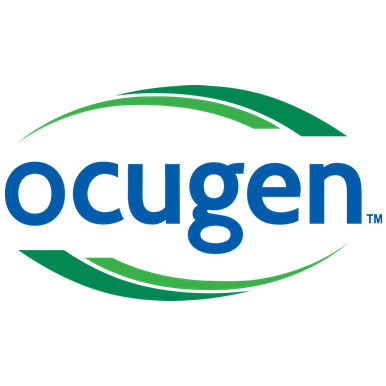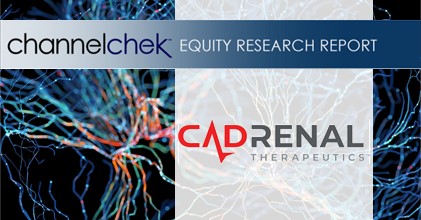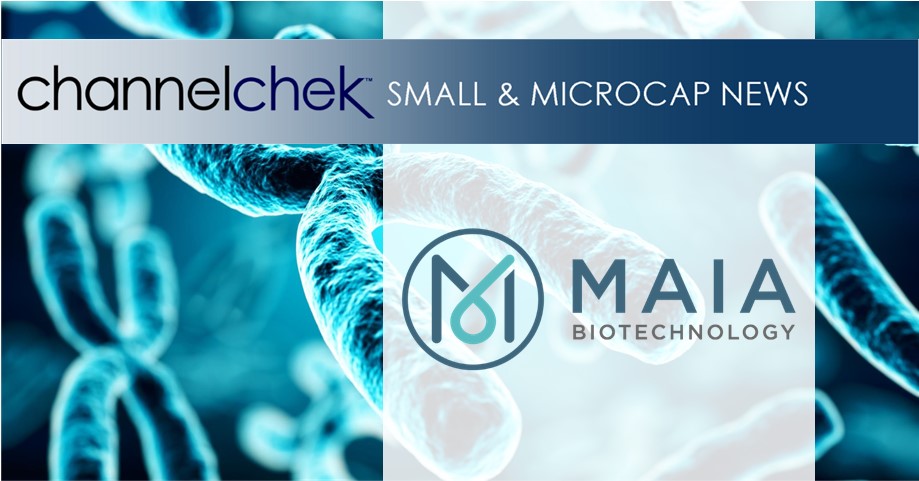Research News and Market Data on OCGN
November 8, 2024
PDF Version
Conference Call and Webcast Today at 8:30 a.m. ET
- Subsequent to quarter-end, closed $30 million in debt financing
- OCU400 Phase 3 liMeliGhT clinical trial for retinitis pigmentosa (RP) on track to complete enrollment in 1H2025
- OCU410 is currently in Phase 2 of the Phase 1/2 ArMaDa clinical trial
- Data and Safety Monitoring Board (DSMB) for the OCU410ST GARDian clinical trial approved enrollment for the second phase of the Phase 1/2 clinical trial
- New data on Phase 1/2 clinical trials for OCU410, OCU410ST and OCU400 to be presented at upcoming Clinical Showcase
MALVERN, Pa., Nov. 08, 2024 (GLOBE NEWSWIRE) — Ocugen, Inc. (Ocugen or the Company) (NASDAQ: OCGN), a biotechnology company focused on discovering, developing, and commercializing novel gene and cell therapies, biologics, and vaccines, today reported third quarter 2024 financial results along with a general business update.
“I am very encouraged by the progress of our gene therapy programs and the clinical and regulatory milestones achieved in the third quarter of 2024, including the expansion of the OCU400 Phase 3 liMeliGhT clinical trial into Canada,” said Dr. Shankar Musunuri, Chairman, CEO, and Co-founder of Ocugen. “With the recent equity and debt financings, we have sufficient cash-on-hand to continue supporting our robust ophthalmology pipeline and extend our cash runway into 1Q2026.”
As OCU400 is advancing through Phase 3 clinical development, the expanded access program (EAP) for adult patients with early to advanced RP makes it possible to reach a greater segment of the RP patient population—300,000 in the U.S., Canada, and Europe combined. Additionally, including Canadian patients in the OCU400 Phase 3 liMeliGhT trial may allow for broader commercialization with the U.S. and Europe. These accomplishments and consistent trial enrollment are bringing the Company even closer to providing a potential one-time treatment for life to patients living with RP.
Phase 2 of the OCU410 Phase 1/2 ArMaDa clinical trial is underway and will assess the safety and efficacy of OCU410 in a larger group of patients who are randomized into either of two treatment groups (medium- or high-dose) or a control group. OCU410 is being developed for geographic atrophy (GA), an advanced stage of dry age-related macular degeneration (dAMD). GA affects approximately 2-3 million people in the U.S. & EU. Current FDA-approved treatments address only the complement system and require approximately 6-12 intravitreal injections per year, whereas OCU410 addresses all four pathways linked with dAMD pathophysiology and is delivered through a single subretinal injection. There remains no approved product to treat GA in the EU.
Over a series of conferences during the third quarter 2024, Ocugen had the opportunity to provide an update on its three clinical-stage modifier gene therapies to significant investor audiences as well as industry decision-makers during meetings like the Cell & Gene Meeting on the Mesa hosted by the Alliance for Regenerative Medicine.
“It is imperative to continue educating our key stakeholders about the differentiated mechanism of action of our gene-agnostic modifier gene therapy platform,” said Dr. Musunuri. “Unlike other product candidates in development to treat blindness diseases, our approach leverages master gene regulators that reset the functional network—rather than targeting a single mutation—and restore overall health to the retina. Our data continues to support the potential to treat multiple disease mutations with a one-time therapy for life.”
While gene therapy remains the primary focus for the Company, Ocugen continues to pursue funding opportunities across the portfolio to ensure that its innovative platforms reach the people who need them.
A clinical showcase, providing updates from Ocugen’s ongoing gene therapy trials, will be held on November 12, 2024, and will include preliminary safety and efficacy data from the Phase 1/2 OCU410 ArMaDa clinical trial for geographic atrophy and Phase 1/2 OCU410ST GARDian clinical trial for Stargardt disease, along with RP and LCA data updates from the OCU400 Phase 1/2 clinical trial.
Ophthalmic Gene Therapies—First-in-class
- OCU400 – Enrollment continues in the Phase 3 liMeliGhT clinical trial and Health Canada approved enrollment across a maximum of 5 sites in Canada. FDA approved EAP for the treatment of adult patients with RP who may benefit from the mechanism of action of OCU400.
- OCU410 – Actively recruiting patients in Phase 2 of the Phase 1/2 ArMaDa clinical trial. Preliminary safety and efficacy update on OCU410 Phase 1/2 ArMaDa clinical trial will be shared at upcoming clinical showcase.
- OCU410ST – DSMB approved proceeding to Phase 2 of the Phase 1/2 GARDian clinical trial. Preliminary safety and efficacy update will be shared at upcoming clinical showcase.
Ophthalmic Biologic Product
- OCU200 – FDA cleared the investigational new drug application for the Phase 1 clinical trial evaluating OCU200. The Company is planning to initiate the OCU200 Phase I clinical trial this quarter.
Third Quarter 2024 Financial Results
- With the recent $30 million debt financing and $35 million equity financing in the third quarter, the cash runway now extends into 1Q2026.
- The Company’s cash and restricted cash totaled $39.0 million as of September 30, 2024, compared to $39.5 million as of December 31, 2023.
- Total operating expenses for the three months ended September 30, 2024 were $14.4 million and included research and development expenses of $8.1 million and general and administrative expenses of $6.3 million. This compares to total operating expenses for the three months ended September 30, 2023 of $16.1 million that included research and development expenses of $7.0 million and general and administrative expenses of $9.1 million.
Conference Call and Webcast Details
Ocugen has scheduled a conference call and webcast for 8:30 a.m. ET today to discuss the financial results and recent business highlights. Ocugen’s senior management team will host the call, which will be open to all listeners. There will also be a question-and-answer session following the prepared remarks.
Attendees are invited to participate on the call or webcast using the following details:
Dial-in Numbers: (800) 715-9871 for U.S. callers and (646) 307-1963 for international callers
Conference ID: 9923172
Webcast: Available on the events section of the Ocugen investor site
A replay of the call and archived webcast will be available for approximately 45 days following the event on the Ocugen investor site.
About Ocugen, Inc.
Ocugen, Inc. is a biotechnology company focused on discovering, developing, and commercializing novel gene and cell therapies, biologics, and vaccines that improve health and offer hope for patients across the globe. We are making an impact on patient’s lives through courageous innovation—forging new scientific paths that harness our unique intellectual and human capital. Our breakthrough modifier gene therapy platform has the potential to treat multiple retinal diseases with a single product, and we are advancing research in infectious diseases to support public health and orthopedic diseases to address unmet medical needs. Discover more at www.ocugen.com and follow us on X and LinkedIn.
Cautionary Note on Forward-Looking Statements
This press release contains forward-looking statements within the meaning of The Private Securities Litigation Reform Act of 1995, including, but not limited to, strategy, business plans and objectives for Ocugen’s clinical programs, plans and timelines for the preclinical and clinical development of Ocugen’s product candidates, including the therapeutic potential, clinical benefits and safety thereof, expectations regarding timing, success and data announcements of current ongoing preclinical and clinical trials, expected cash runway into the first quarter of 2026, the ability to initiate new clinical programs, statements regarding qualitative assessments of available data, potential benefits, expectations for ongoing clinical trials, anticipated regulatory filings and anticipated development timelines, which are subject to risks and uncertainties. We may, in some cases, use terms such as “predicts,” “believes,” “potential,” “proposed,” “continue,” “estimates,” “anticipates,” “expects,” “plans,” “intends,” “may,” “could,” “might,” “will,” “should,” or other words that convey uncertainty of future events or outcomes to identify these forward-looking statements. Such statements are subject to numerous important factors, risks, and uncertainties that may cause actual events or results to differ materially from our current expectations, including, but not limited to, the risks that preliminary, interim and top-line clinical trial results may not be indicative of, and may differ from, final clinical data; that unfavorable new clinical trial data may emerge in ongoing clinical trials or through further analyses of existing clinical trial data; that earlier non-clinical and clinical data and testing of may not be predictive of the results or success of later clinical trials; and that that clinical trial data are subject to differing interpretations and assessments, including by regulatory authorities. These and other risks and uncertainties are more fully described in our annual and periodic filings with the Securities and Exchange Commission (SEC), including the risk factors described in the section entitled “Risk Factors” in the quarterly and annual reports that we file with the SEC. Any forward-looking statements that we make in this press release speak only as of the date of this press release. Except as required by law, we assume no obligation to update forward-looking statements contained in this press release whether as a result of new information, future events, or otherwise, after the date of this press release.
Contact:
Tiffany Hamilton
Head of Communications
Tiffany.Hamilton@ocugen.com
View Full Release Here.

